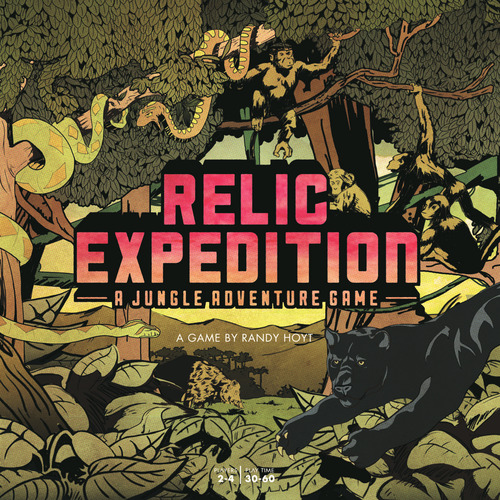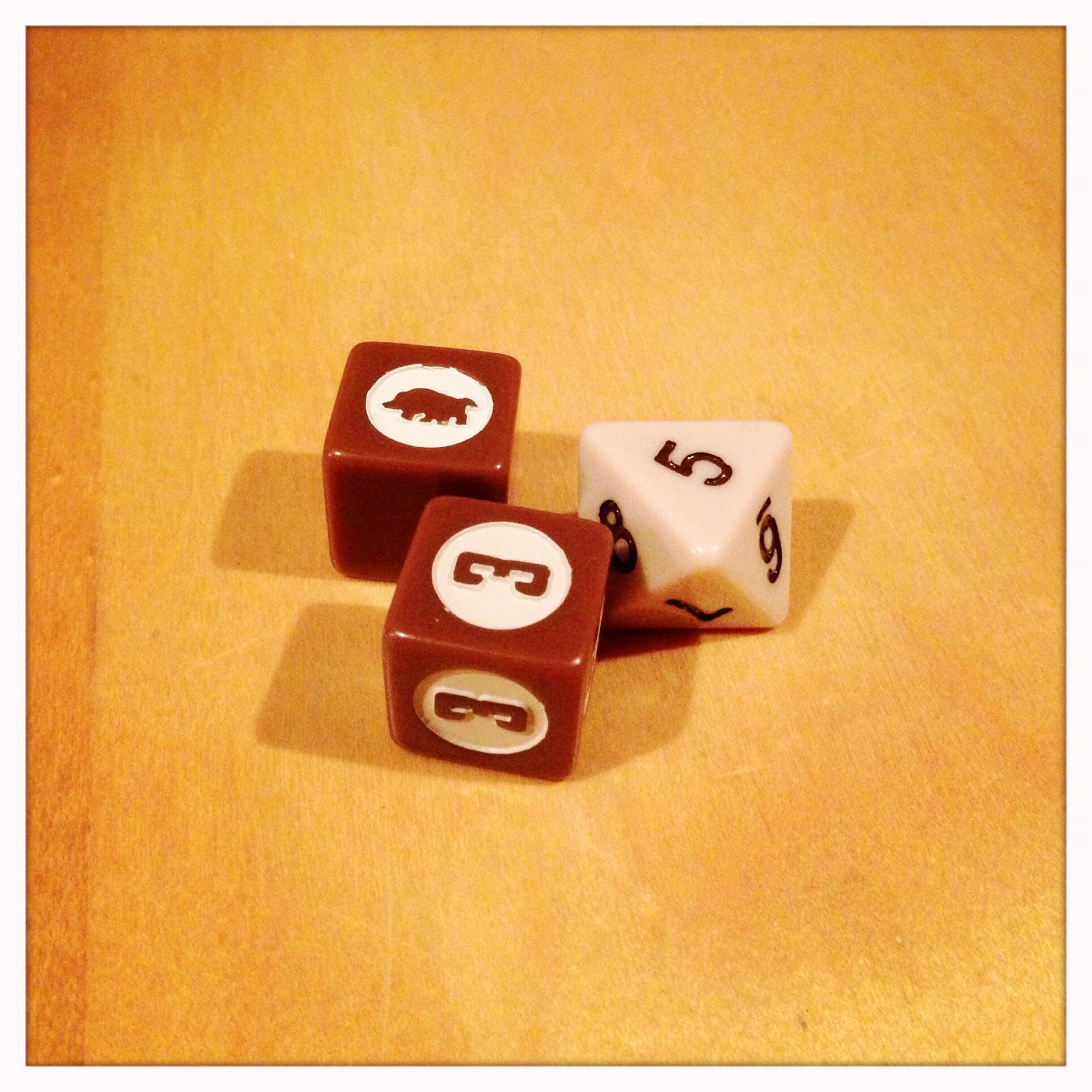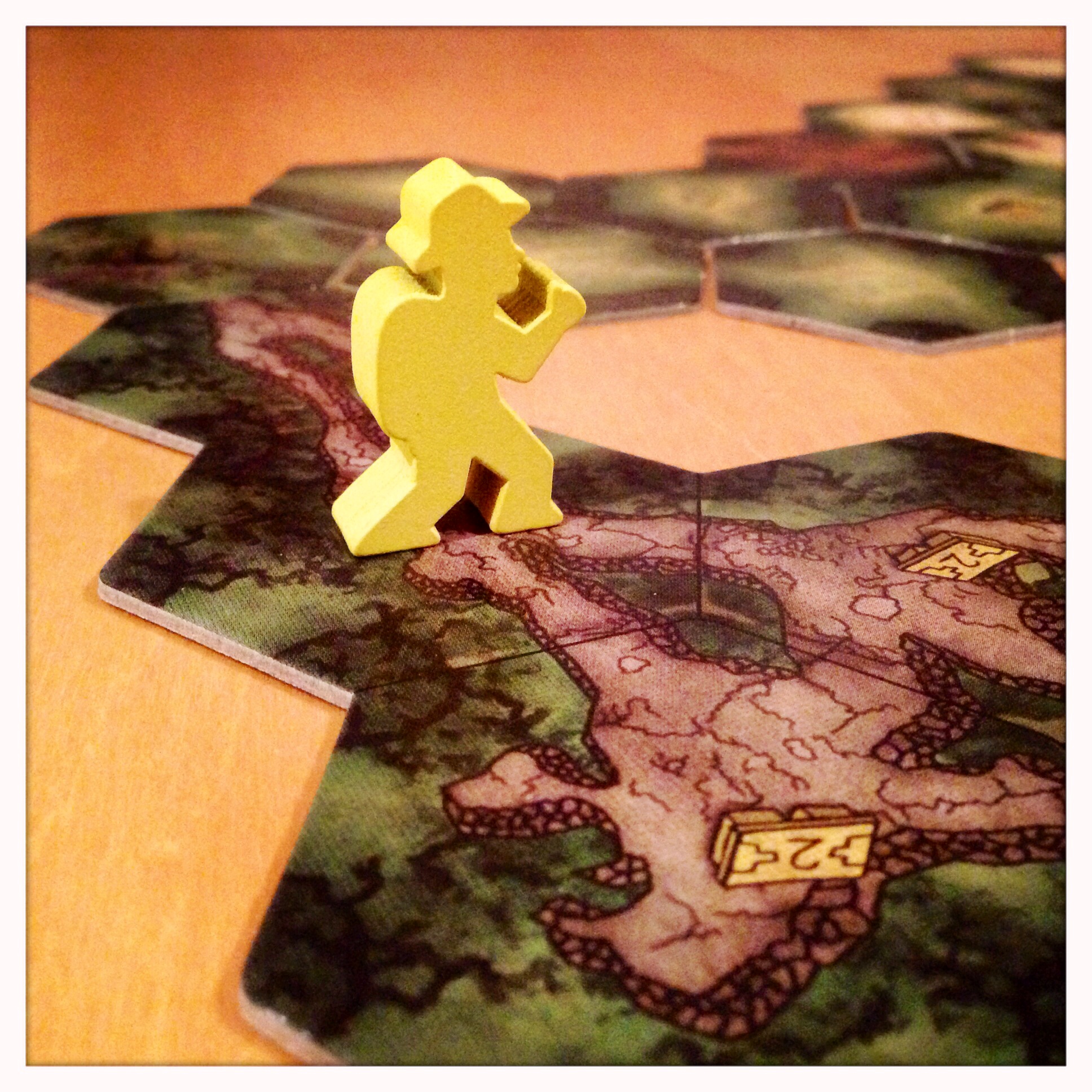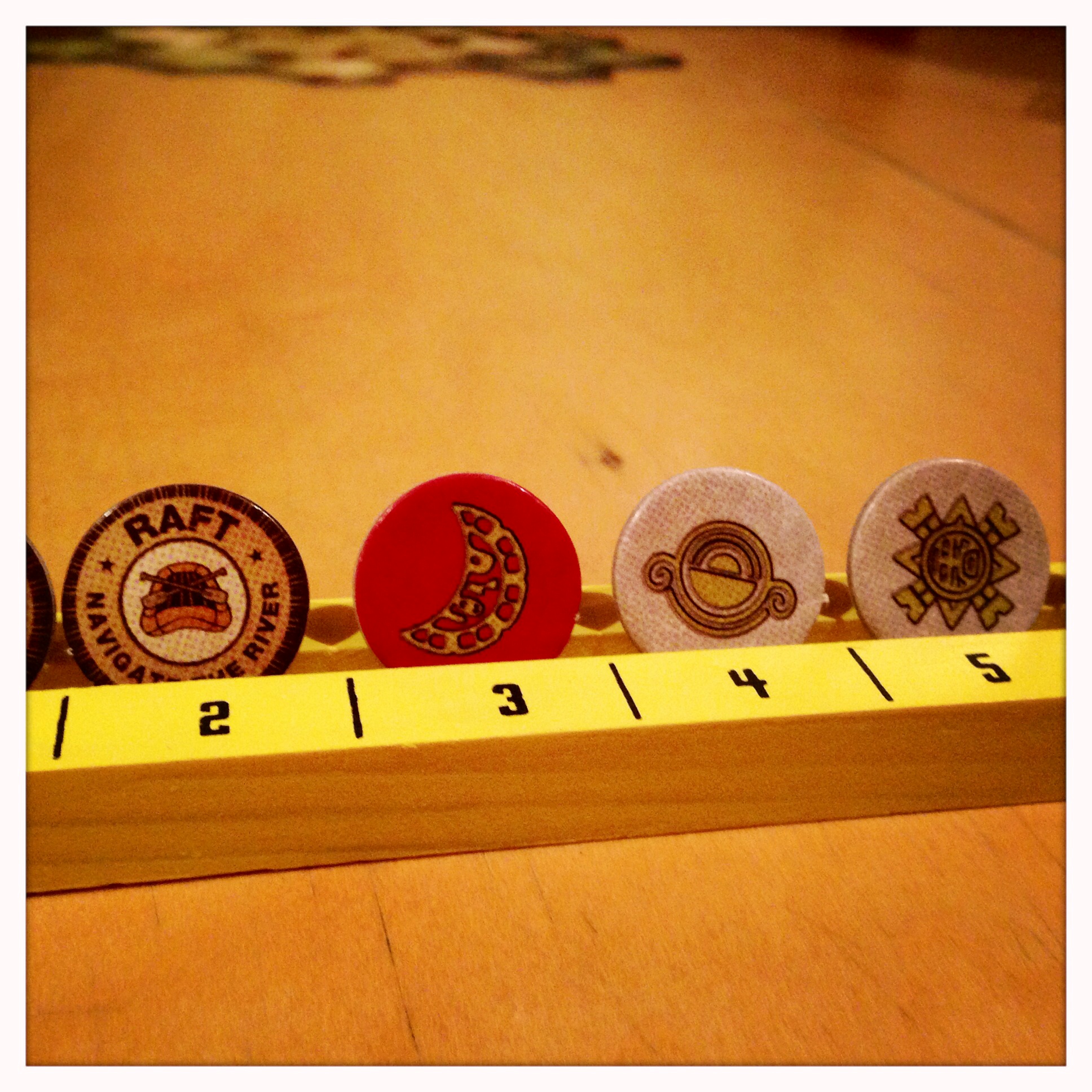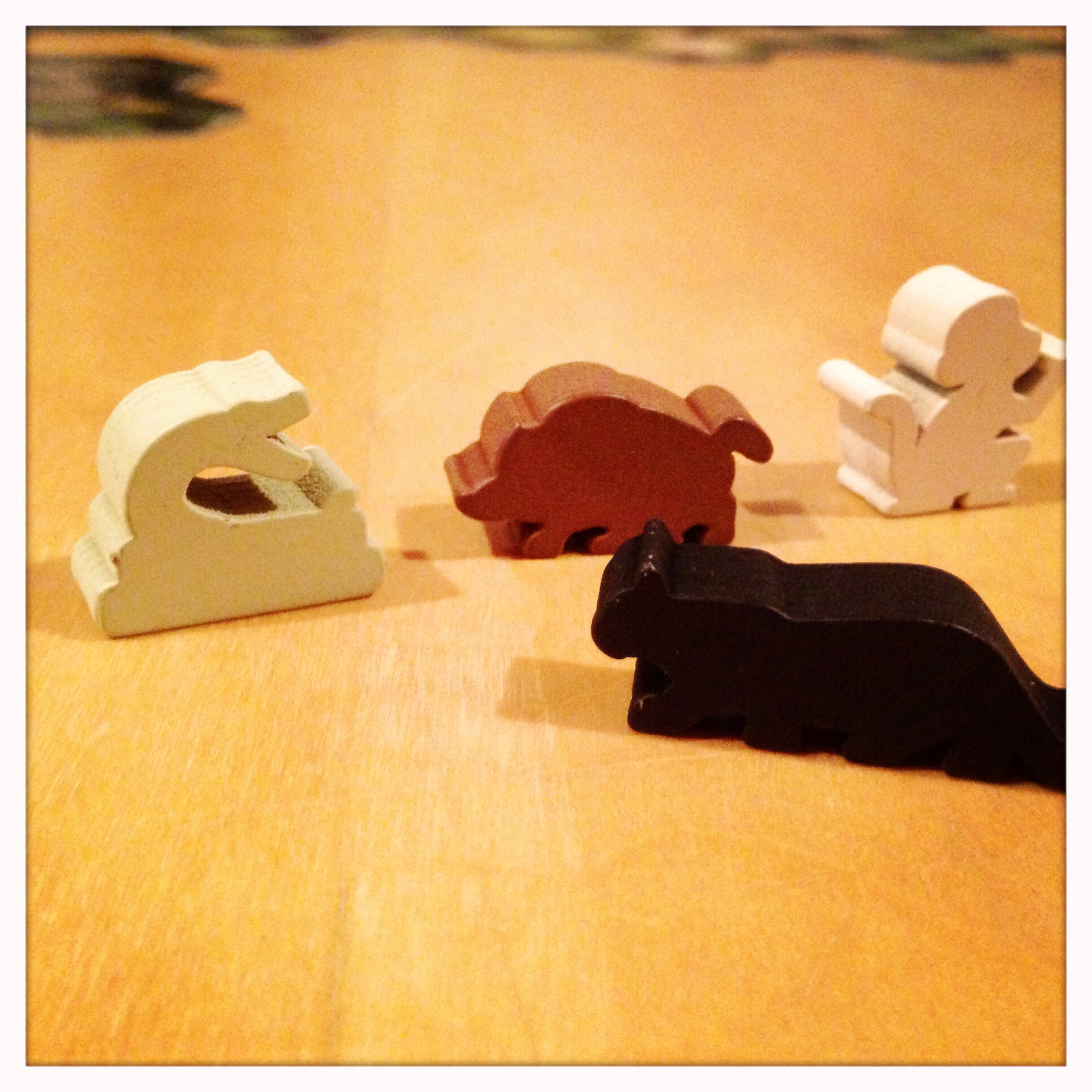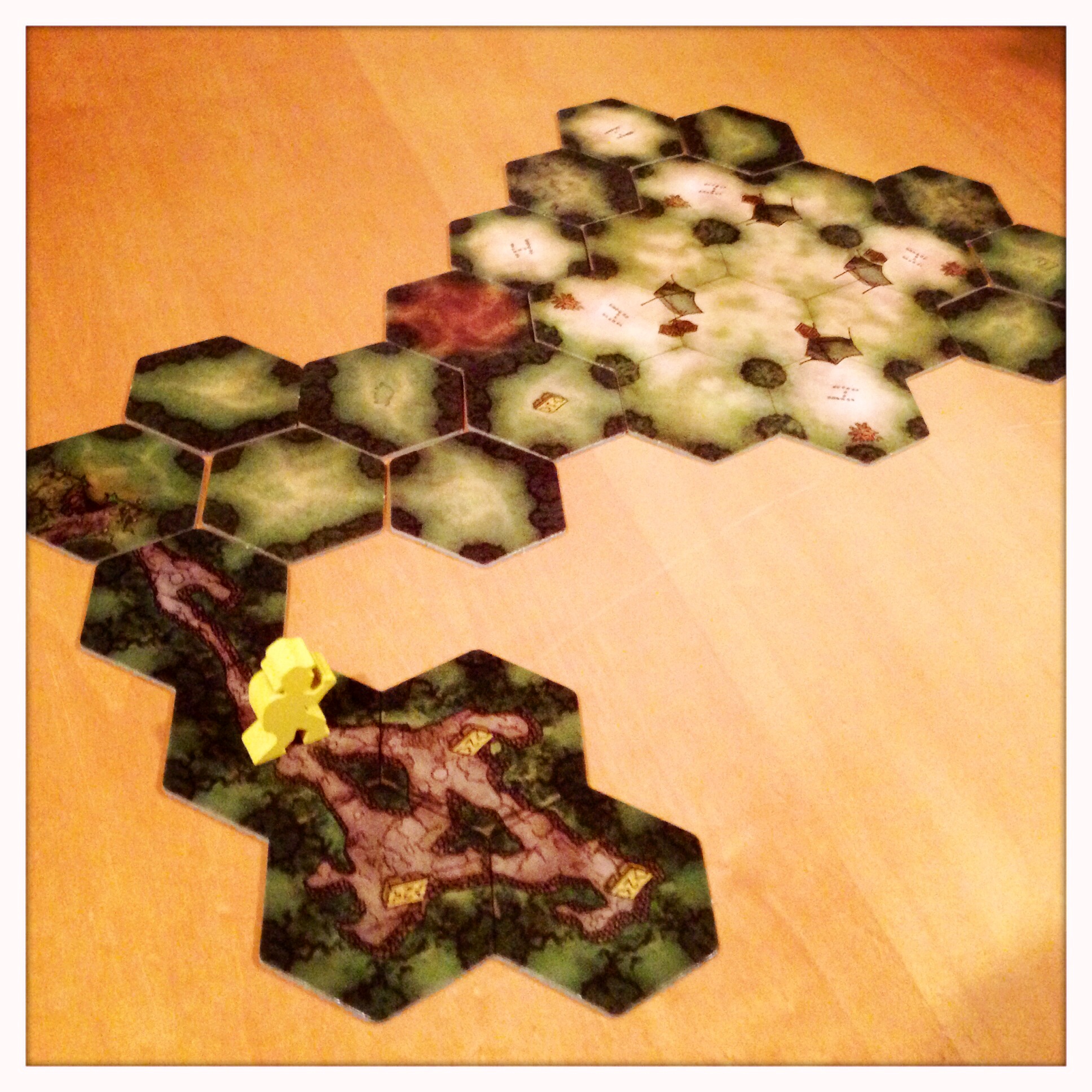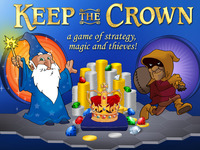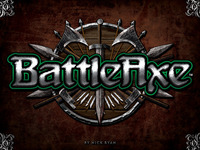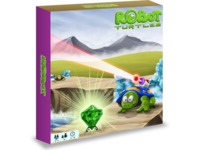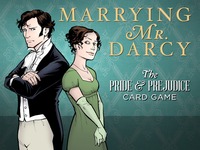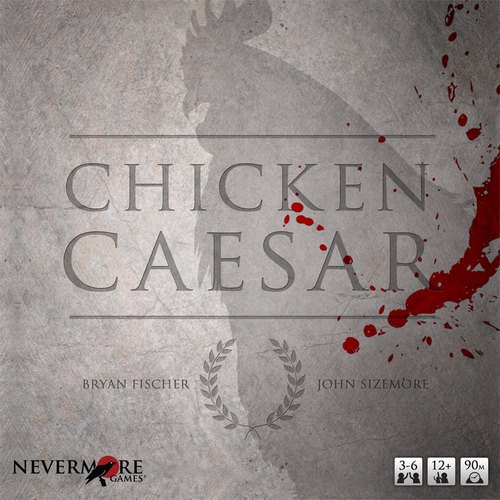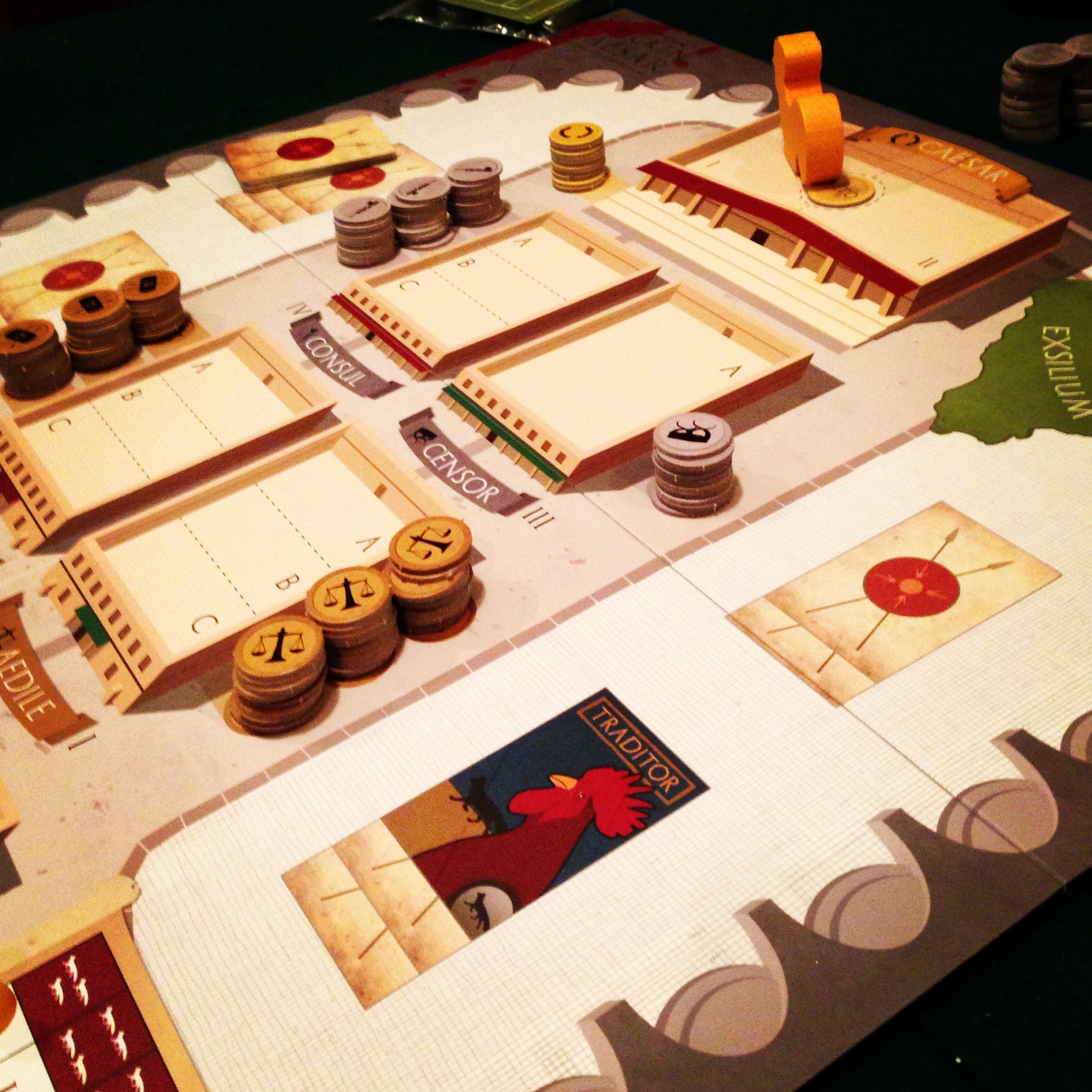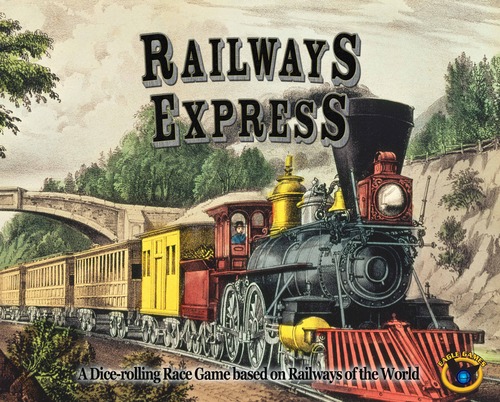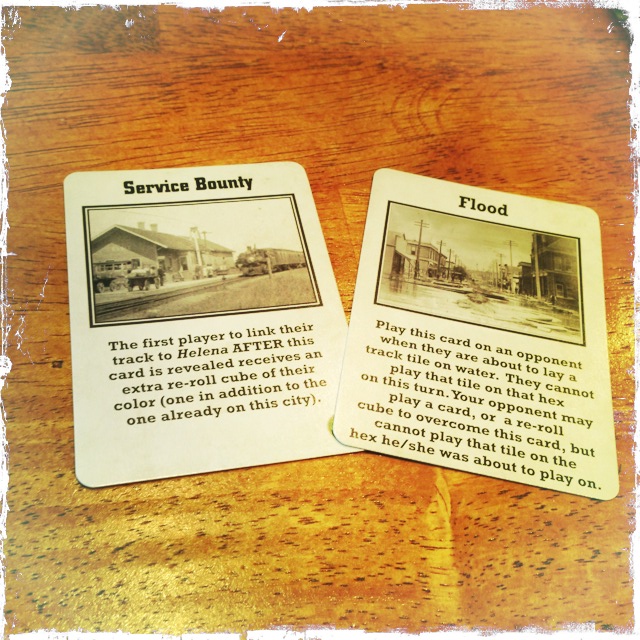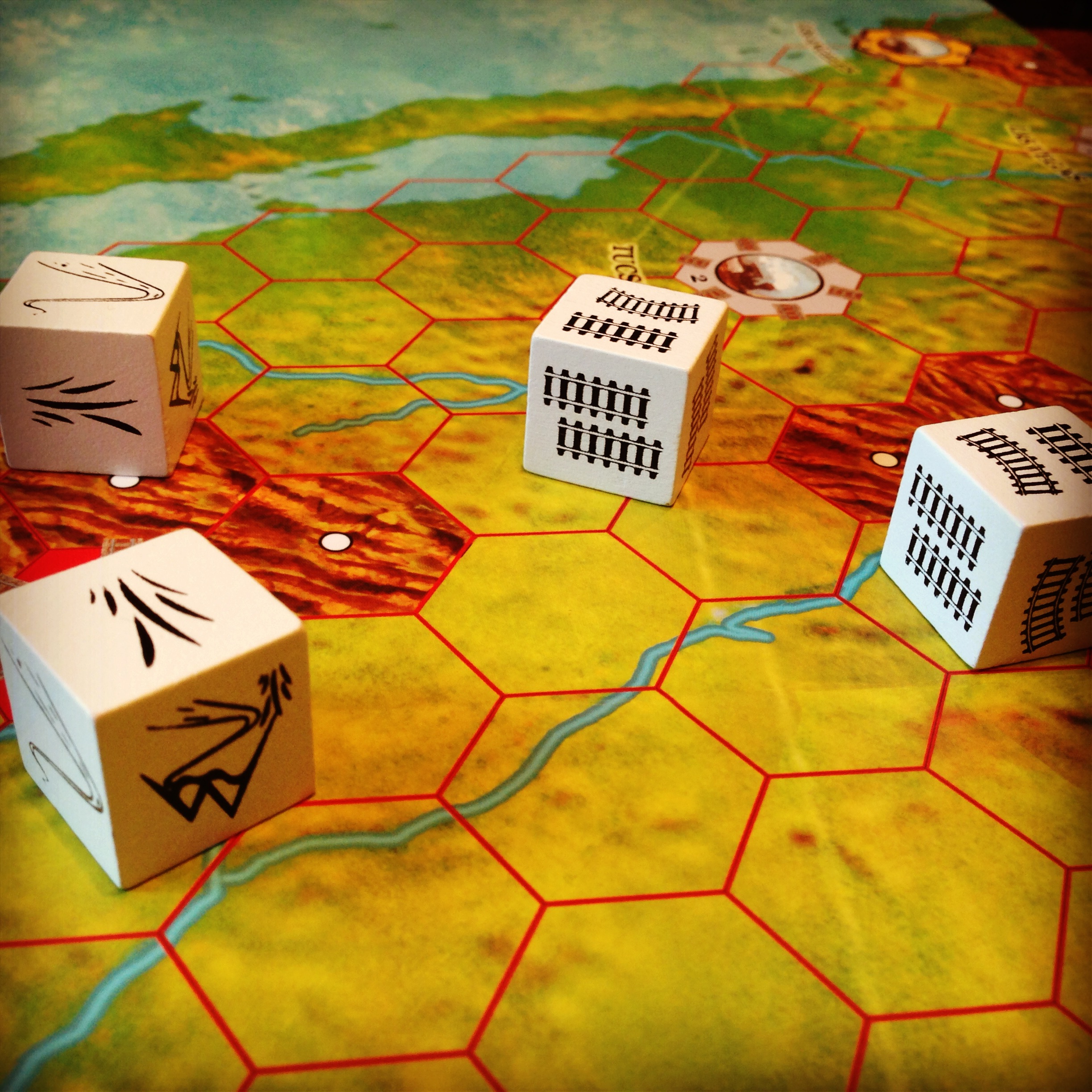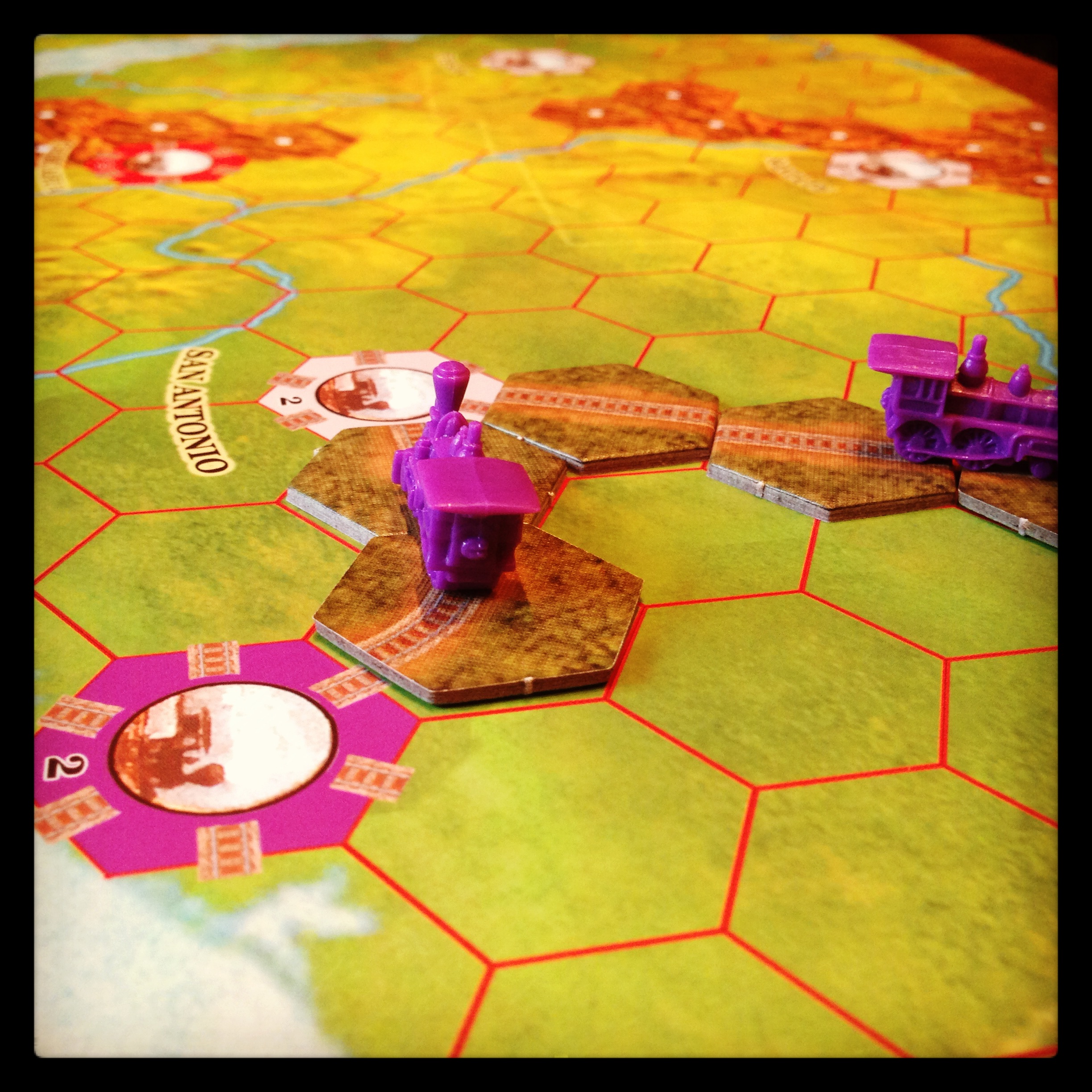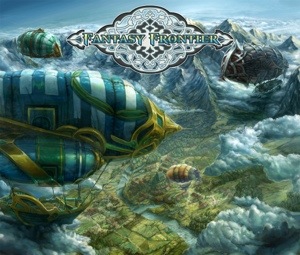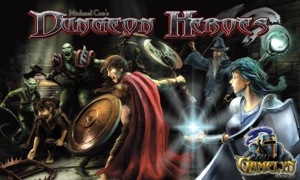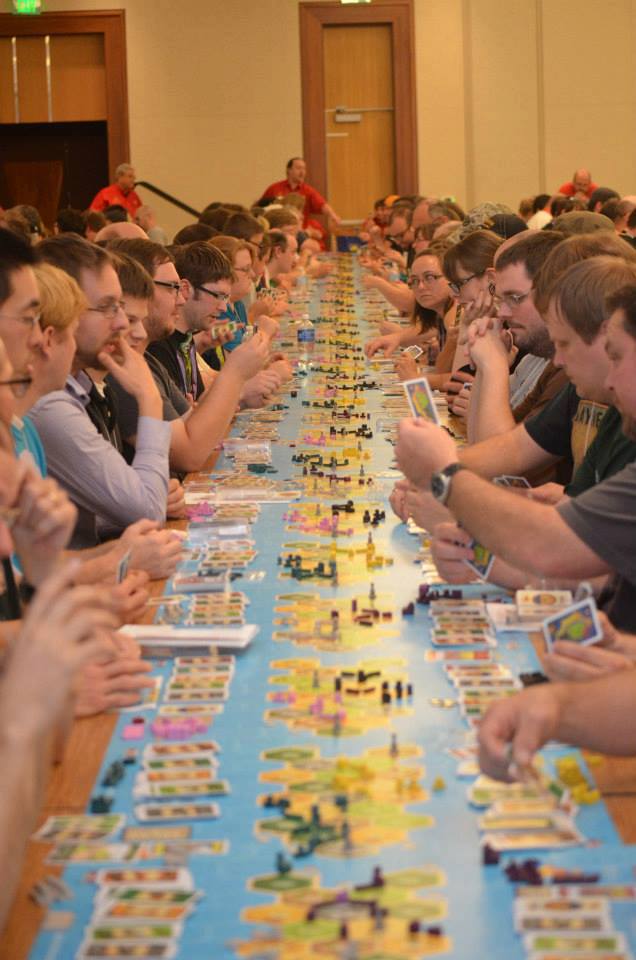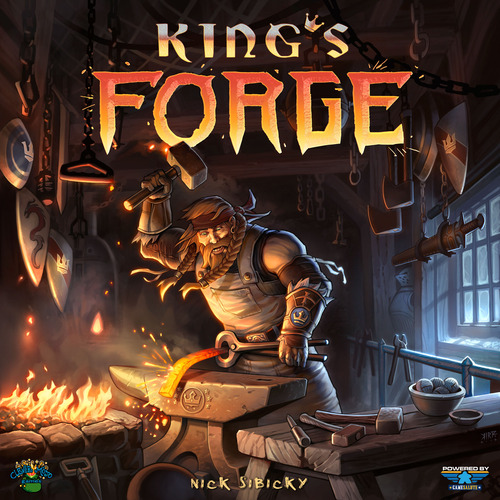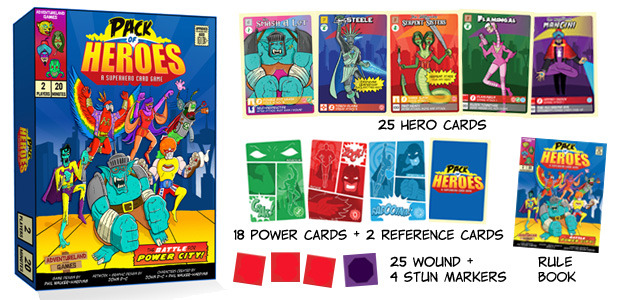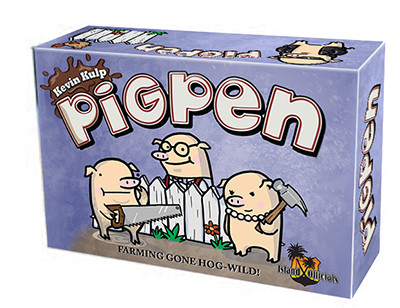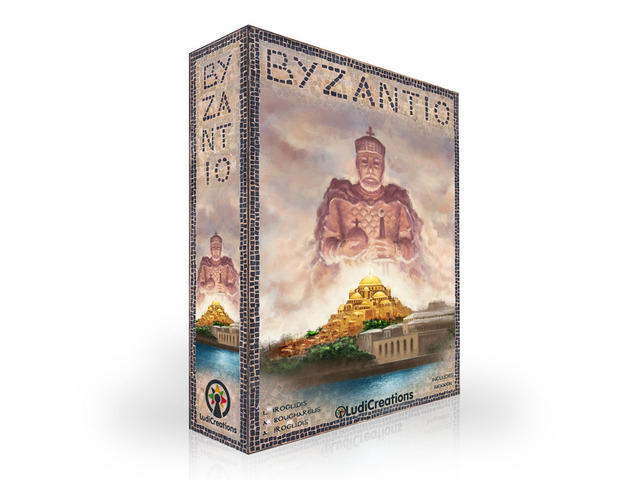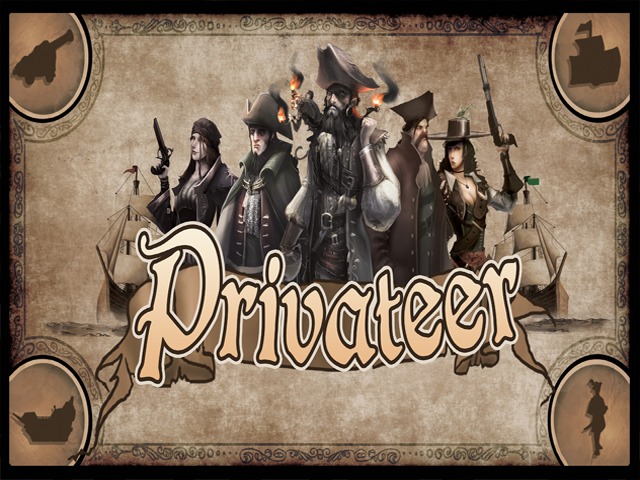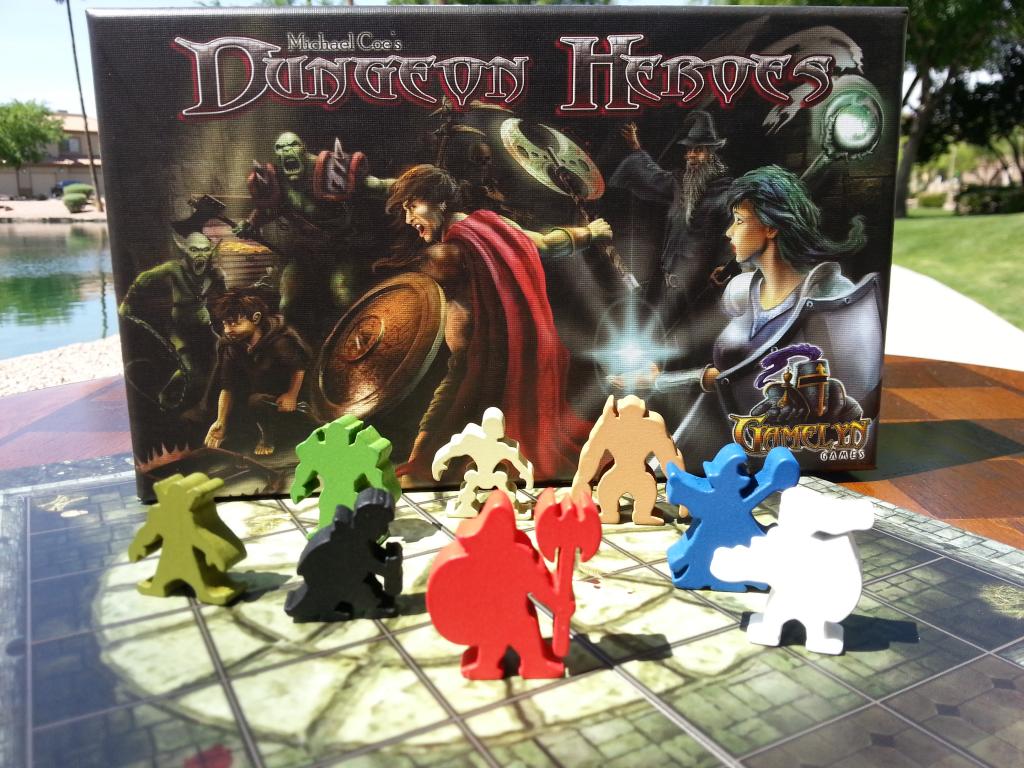Hegemonic--A Double-Take Review
/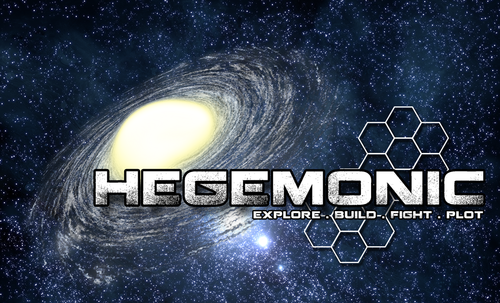 Space, the final frontier...
Hegemonic is a new 4X game for 2-6 players from Minion Games. For those who may not be familiar with 4X games the four X's stand for eXplore, eXpand, eXploit and eXterminate. So maybe they should be called 4-eX games? Anyway. Hegemonic takes place in space, as players act as the rulers of different "houses" looking to expand their reach and control in the galaxy. What did we think of Hegemonic and the final frontier? Let's take a look!
Space, the final frontier...
Hegemonic is a new 4X game for 2-6 players from Minion Games. For those who may not be familiar with 4X games the four X's stand for eXplore, eXpand, eXploit and eXterminate. So maybe they should be called 4-eX games? Anyway. Hegemonic takes place in space, as players act as the rulers of different "houses" looking to expand their reach and control in the galaxy. What did we think of Hegemonic and the final frontier? Let's take a look!
The Overview
Like most 4X games, you'll start with a little, and grow your space, units, and power--eventually clashing with other players. But unlike most 4X games, this is done with influence, and not big fleets and the roll of the dice.
There are TONS of pieces, parts, and cool bits to this game. We'll list them here, but if you'd like to see them live and in video. Click here to see our unboxing video on YouTube.
1 - Galactic Core Board, which is the center of the game play and has a turn order tracker on it.
9 - Five-Sector Galaxy Boards - The five sectors are hexes, and you use a certain number of these boards depending on the number of players in the game.
The bits - there are an even number of all of these split into six colors -blue, green, orange, purple, red, and yellow.
90 - Industrial Complexes - two of these are used for score tracking.
54 - Political Embassies
72 - Martial Outposts
18 - Quantum Gate pairs
18 - Political Agents
18 - Fleet Units
1 - Score Tracker Board
48 - Sector Tiles - These have an assortment of possible bases that can be built on them of varying powers and ranges; this will all make sense shortly. Some of them also has a background color, which means it's part of one of three different Factions that can lend support in conflicts.
36 - Action Cards - This makes a set of six cards per player; they're all all the same set of cards, but they have different colors to let you know who played what.
54 - Tech Cards - This is a deck of cards with technology on them that can be advanced, or power values that can be used to help you win a conflict.
1 - Arbiter Token - This is the 1st player token but also has some benefits in game play.
12 - Leader Cards - These are optional and add some more options to the game play.
81 - CAP Tokens - this is the game's money
6 - Player Board - Very cool two-layer boards that hold all of your bases and show how much each costs to build, how much money you can keep at the end of a turn, and how much you gain at the beginning of the next turn.
The Setup
There are examples for setup, depending on how many players are in the game, but it should be noted that there is also a specific number of sector tiles and boards to put into the game.
Eight sector tiles are randomly selected per player, which create a draw stack. Choose a start player. Each player places his or her starting tile--each color has one on--the board. There are suggestions on where these should be placed, and they cannot be placed on the Core Galactic board. Each player then places one Industrial Complex, one Political Embassy, and one Martial Outpost on that starting tile. Each player then in turn draws two tiles and plays one adjacent to their starting tile--this one can be placed on the Core Galactic board--and then places the other one face up next to the draw stack, which creates the "Sector Pool" that will be used for the remainder of the game. Then each player is dealt two cards from the Tech Deck.
The Gameplay
After you've set up, play moves through six different phases. The first two phases start with the Arbiter, and then things get interesting. Here's a quick rundown of the phases.
Phase 1: Collection--Players receive CAPS equal to the highest "gain" number value for each track on their board--Industrial, Political, and Martial--that has an empty spot on it. In other words, the more they've built from one of those tracks the more money they get at the beginning of the turn.
Phase 2: Expansion--This is a pretty simple step. You draw one tile from the Sector tile draw stack, place it faceup in the Sector Pool, and then select any tile from the Pool to add to the board. It can be placed on any empty space, except for the very center space where the turn order tracker is. Then you draw two cards from the tech deck, and either discard one of them, or pay the cost denoted on a card to advance that technology. You also can only advance a tech if you have built that specific track to the particular tier denoted on the card--for example, if you've built your martial track into the second tier, but the card requires a martial tier of three, you can't advance that technology just yet.
Phases 3-5: Action Phases--All three of these are identical. You'll be playing an Action card from your hand, resolving the cards in the order of the number on the card (they're 1, 2, 2, 2, 3, and 4), and then getting your card back. You do this three times, and then move on to the next phase.
Phase 6: Arbitration--At this point in the game, whoever has the most money receives the Arbiter token. Then players pay money to the general supply until they have no more than the lowest "retention limit" value that is revealed on their board. These show up in the spaces that you build your bases from. The more you've built, the less you keep at the end of the turn--think of it as administrative costs for your growing empire...
And then you score points at the end of each turn. Players add up their power (or influence) on each 5-sector board: Whoever has the most gets six points, whoever has the second most gets three points, and if any other players simply have presence there they get one point. You get an extra two points for being the only player on a board, and an extra one point for each score awarded on the Core Galactic board.
Then you go back to phase one and do it all again.
The game ends on the round that the board is filled. The board is scored one last time and whoever has the most points wins.
Action Cards
We really need to take a minute to explain some of the Action cards, because this is where the meat of the game lies. There are a lot of options, and a ton of housekeeping that comes with the Action Phase, so let's dig in.
Each Action card has several actions you can choose from, and all of them allow you to choose up to two Actions. Most of them have a Basic action that allows you to use one of the actions to gain two Caps, or draw one tech card and advance one or discard one.
Here's a quick overview of the cards:
Assault - 1 - This action allows you to attack from one type of base to a non-alike base, for example you can attack with a Martial Fleet to an Industrial complex or Political Emabassy. This is a "Destroy" action so doing this only weakens your opponents and you don't take over the area you assault.
Industrialize, Politicize, Martialize - 2 - All three of these cards have the same number, and each does the same thing but for a different area of influence: Industry, Political and Martial. This Action card allows you to choose from the Basic action, or to build new bases -of the type you selected--and/or gates, fleets, and agents. Each base built has a "range" and "power" value printed on the tile you build them on, ranging typically from 1-3.
You can also choose to attack and "Takeover" the same type as you are building this turn. This allows you to not only weaken your opponent but allows you to takeover and build the same type of base you just destroyed.
Subvert - 3 - This action card gives you the Takeover ability of the number 2 action cards, but you can do it with non-alike types of conflict--like card number 1, you can attack Industrial and Political with Martial power.
4 - Discover - This card gives you three options: Capitalize, which lets you to gain more money--often a power play to gain the Arbiter token next round. Survey, which allows you to add another tile from the pool to the board. Research, which allows you to discard and redraw Tech cards.
We feel we should also spend some time on the conflict-resolution mechanics of this game, this is where the game grinds to a snail's pace.
There are three distinct battle systems used in Hegemonic. Which one you use depends on what power you are using for your attack - Industrial, Political or Martial. And each of those areas has a unique defense value that is totaled.
When you attack with Martial power you must have a fleet in play, then pay to move that fleet, and pay to attack--based on the power of the base you're attacking. Then you calculate the attack power of your fleet by the number of one base that has the "range" to reach the fleet, and all of the bases that have the "range to reach that supporting base --and your gates can add other bases because they create adjacency and add your fleet's power, which is denoted on your player board and dependent on the tier you have reached on the Martial track . You then add up the total defense power of the defending outpost, which is simply adding the power of the defending outpost, along with any outposts that can reach it with its own range, along with any outposts that are within the defending outpost's range, and the power of any fleets that may be on the defending outpost's tile. Then you add the power of one tech card--using the icons on the bottom to match the type of conflict--and then total up the power and see who wins. It's THAT simple!
Industrial doesn't have fleets or agents so you can only attack within one complex's range adding attack and defense power from outposts that are within range, and a tech card from each player's hand.
And Political conflict is much like Martial conflict except you move your agents and only draw support from political embassies that are within range of your agent and then those around the board that are on the same Faction (color) as the supporting embassy.
There are a couple of advanced rules options, including Leader cards that let you do some really fun stuff.
The Verdict
Jeremiah--Let's talk about the components first. Everything in the box is really top notch. It's very well designed both artistically and graphically. It's a really great game to look at. The way the Martial outposts stack is cool in both form and function. The player boards are great and ingenious too. All the plastic mini bits just fit and work. My chief complaint about the components has to fall upon the rule book. The layout and explanation of the conflict, especially, leaves a lot to be desired. The gameplay is really complex with tons of moving parts and things to keep track of, and having anything short of an amazing rule book to reference was very frustrating at times.
Firestone--I agree on the components. I was blown away by the 2-layer player boards. All of your stuff fits right in the spaces, and if you bump it you won't have to spend 10 minutes righting everything. The plastic bits are cool, and I totally agree: The stacking Martial Outposts are cool. The Sector tiles are colorful, and interesting, and convey a lot of information using colors and icons in a nonobtrusive way.
Jeremiah--The expanding and exploring portions of Hegemonic are really, really cool. It all made a lot of sense, and was fun to plot out what you could do on your turn and think ahead and try to figure out what the other players were looking at as well. The monetary system works really well too. As you build you find out how necessary it is to build evenly, and the more you build there's a good chance you'll lose out on being the Arbiter because the cost to build increases as well.
Firestone--One of my favorite things about this was the Sector Pool. I really dislike the randomness of the tile draw in Eclipse. "Hey, I drew a crappy one! Hey, you drew an awesome one! Good for you!" Blech. Now, it can absolutely still happen that an opponent will draw exactly what she needs, and you won't, but at least you're not stuck with the one tile you drew. There are always options in the Sector Pool, and that tile that was useless to your plans earlier might be important to your plans now...
Jeremiah--The battle system, though, made the game feel unnecessarily bogged down. We trudged through each and every conflict, and had to dig into the rule book to find answers. I understand: There are three different types of power on the board, and they all use their power differently. Awesome. But there is just SO much to keep track of, it really kept us from wanting to attack the other players, which kind of stinks in a game that's designed to be one quarter eXtermination.
Firestone--Yeah, the conflict resolution is CONVOLUTED. It's not enough that you're trying to figure out what you need to do, and what you think your opponents might be trying to do, but when you add on this extra layer of conflict resolution, it's enough to make your head explode. Just like Jeremiah, every time there was a conflict, we'd have to go through all of it, step by step, and resolve it. Anther problem was that even if you were THINKING of attacking someone somewhere, you had to figure this whole thing out by yourself, because you didn't want to telegraph your move. But that meant more time, and a greater chance that you'd screw something up since you're doing it alone. "Okay, so if I attack there, I'll have to do it with that power, so I'll have to play this card. So now we add up his power, and then mine comes from there, there, and...there, so that's...and then I'll have to play this card, and hope he doesn't have that card..." Ka-BOOM!
I know it sounds like we didn't like it, but I like everything but this aspect. Unfortunately, this aspect is a huge part of the game. This isn't enough to keep me from playing the game, and I think it will get easier as you play more. It's just something you should know going into it.
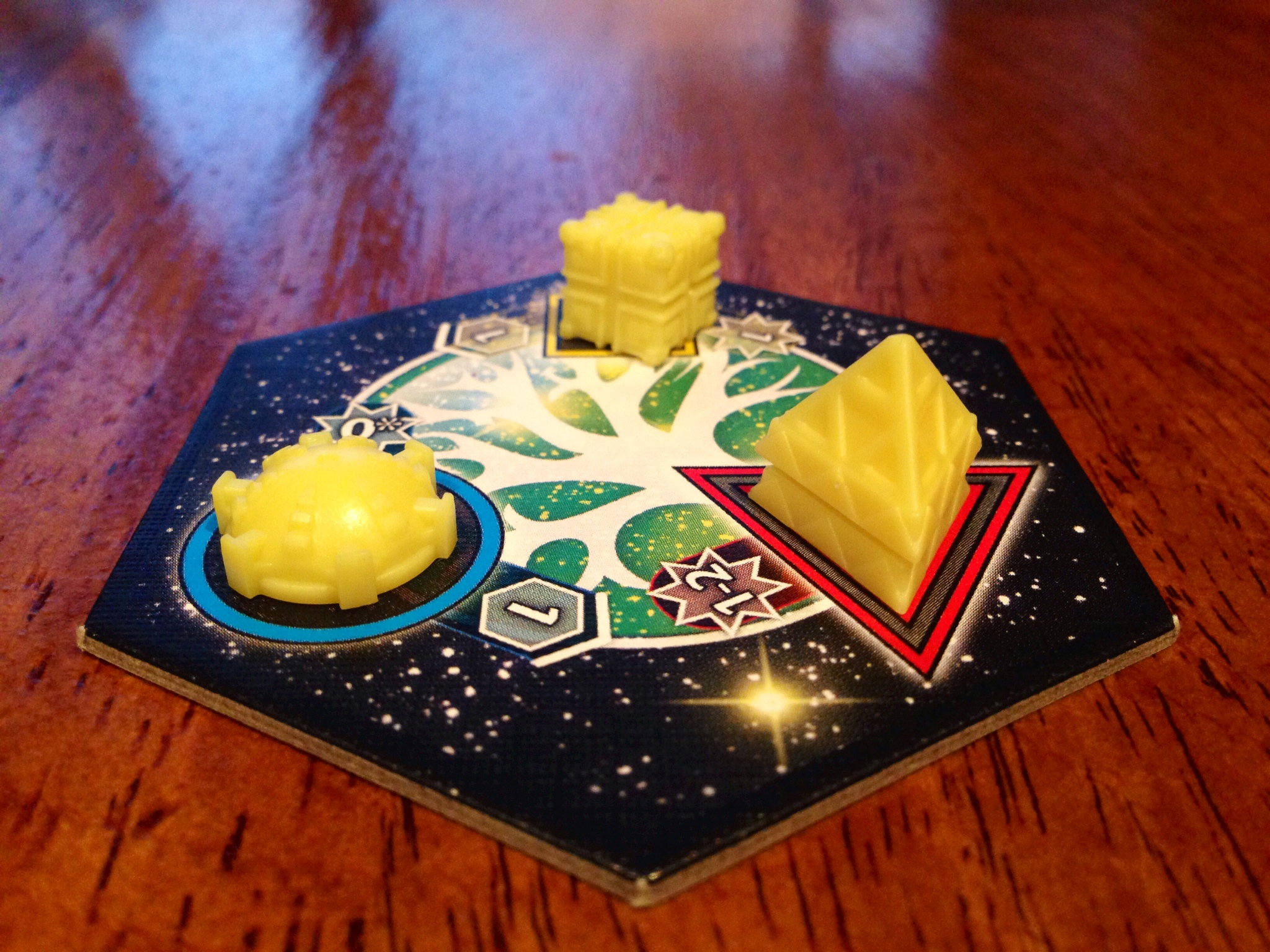 Jeremiah--Our game group is split pretty much right down the middle about Hegemonic. Myself and a few others liked the game and see how much fun it can be. Others just couldn't abide the intricacies and the multiple battle systems, and all the housekeeping that went into it. I will say there is nothing in this game that makes it unfriendly to family players, or deeply offensive, other than the very involved and intensive learning curve. The theme is fun and exciting, but the game is long and laborious; many casual players will not make it halfway through the instructions.
Jeremiah--Our game group is split pretty much right down the middle about Hegemonic. Myself and a few others liked the game and see how much fun it can be. Others just couldn't abide the intricacies and the multiple battle systems, and all the housekeeping that went into it. I will say there is nothing in this game that makes it unfriendly to family players, or deeply offensive, other than the very involved and intensive learning curve. The theme is fun and exciting, but the game is long and laborious; many casual players will not make it halfway through the instructions.
Firestone--Yeah, this is a gamer's game for sure. I played twice with gamers, and they all thought it was pretty good, but they were all put off by the conflict resolution. Some of them would play again (as would I), but some would be fine never playing again.
One good thing was that our first game was with four brand-new players, and we finished in just over two hours. That's just not happening with Eclipse and Twilight Imperium III...
In the end, this doesn't feel much like a 4X game to me. Sure, you're drawing tiles and expanding and taking things over. And there's technology, and all of the things you'd expect in a 4X game. It just didn't feel like one... What it really felt like was an area-control game--El Grande if El Grande decided to do CrossFit, maybe...
Jeremiah Final Verdict--Hegemonic is not for the faint of heart. I have to give this one somewhat of the benefit of doubt. To be fair my game group does not often play 4X type games, it's mostly Euros, cards, co-ops and the like for us. So this was a pretty new experience, and deeper level of strategy game than most of us have played. I get the feeling a few of us may get together and sit down with this one and really enjoy it. But a table divided can not stand, so we had a rough time getting through this one a few times. The art, concept, and deep mechanics are well thought out. Maybe a little too well thought out. Don't even think about putting this on the table with kids, family or casual gamers; it's simply too much for those situations. If you're into 4X games, and love deep, and at times tweaky mechanics, this will be right up your alley, so in that setting, I say Put This One on the Table.
Firestone Final Verdict--I'm very conflicted on this one. The components are top-notch. The art direction, and "small" decisions, such as having three distinct shapes for the powers, and stackable martial triangles, are inspired. It doesn't much feel like a 4X game to me, so it's not going to replace Twilight Imperium III. And while I like area-control, this one has such complex resolution on conflict that I would rather just play a classic such as El Grande. But I still liked Hegemonic! I just didn't love it. There's very little luck. It's interesting. It looks great. It's obviously well-thought-out. As long as you have the correct expectations going in, I say Put This on the Table!
We'd like the thank Minion Games for providing review copies of Hegemonic. This in no way affected our opinions on the game.
Thanks for reading! Please check us out on Twitter, Facebook, and YouTube.






